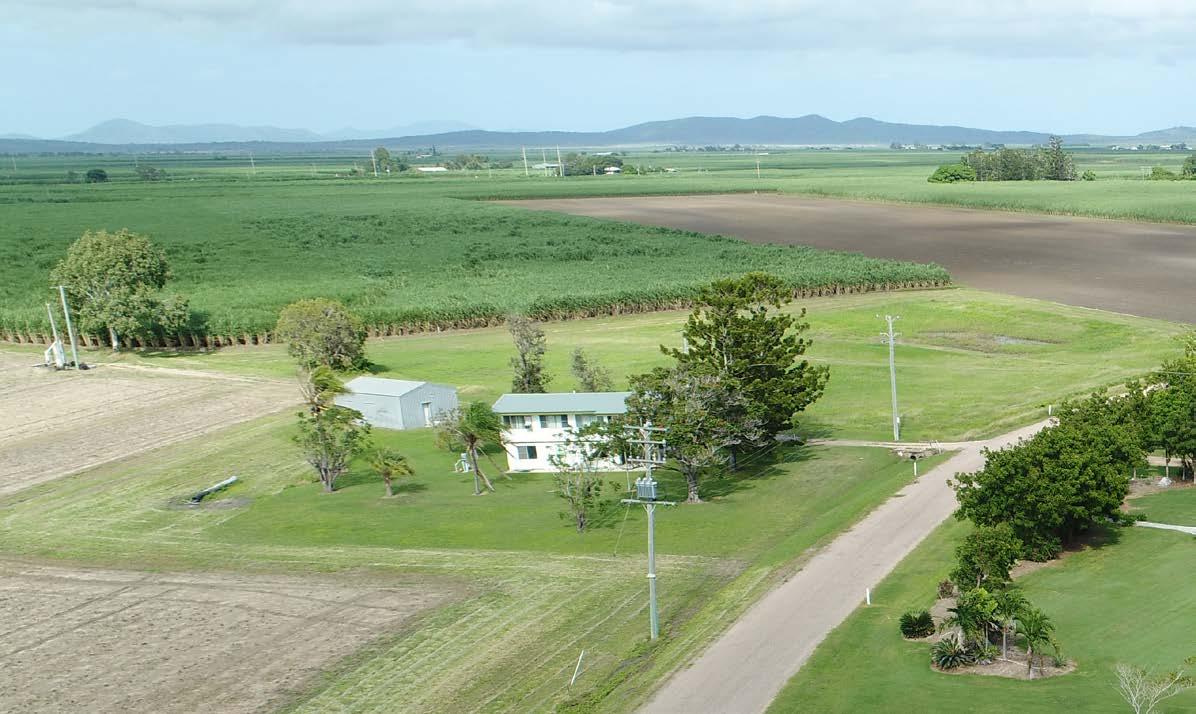
7 minute read
Policy updates
Mick Quirk Environment and Sustainability Manager CANEGROWERS
Reef projects and N rates - change the conversation
Advertisement
A reef credits scheme was launched recently (see page 8) and for sugarcane, its primary focus is payments to growers who reduce their rates of nitrogen (N) fertiliser below the recommendations derived from SIX EASY STEPS (6ES). The Queensland Government is helping to bankroll it to the tune of $10 million over the next few years. This scheme is additional to the $62 million, over five years, of Federal Government investment to reduce losses of N from cane farms. These funds are being dispersed through the Great Barrier Reef Foundation. In both cases, the emphasis is on encouraging growers to reach the so-called ‘B’ management standard in the government’s Paddock to Reef (P2R) program. This program attempts to model industry’s efforts to reduce losses of dissolved N from farms.
For the majority of growers, reaching the ‘B’ management standard will require reductions in N rates of up to 30% below 6ES rates. CANEGROWERS has already revealed that widespread use of such N rates would cost the industry and the state at least $1.3 billion over a 10-year period. Why this never-ending focus on further reductions in N rates? Because of the persistent myth of the veracity of the block yield potential method for calculating crop N requirements. This spurious approach still underpins Federal and State policies and programs including P2R. The lack of interest in using an evidence-based approach is concerning and frustrating! So what should reef programs be investing in? How about win-win situations? Here are some examples:
Help growers increase yield so more N is in the crop and less is vulnerable to environmental loss through addressing constraints to yield, such as soil health, drainage, irrigation effectiveness and superior varieties
Incentives to implement new technologies - such as fertiliser coatings or formulations to achieve better synchrony between crop demand and soil availability. This should overcome some of the inefficiencies associated with the use of highly soluble forms of N such as urea. Some products show promise but are expensive so rapid adoption will require incentives.
On farm demonstrations and economic analyses to better inform the refinement of nutrient management, including identifying situations which are likely to be less, or more, responsive to nutrients. The 6ES tool box, developed by SRA, should be the basis for this work.

Both the reef credits scheme and the GBR Foundation projects should focus on these win-win situations. CANEGROWERS will keep pushing for this but they also need to hear from you. They need growers to be involved in their activities and you are in a great position to influence what they offer. Let them know that just banging on about further reductions in N rates will not take them very far.
Banging on about N rates is not the path for success for reef projects. CANEGROWERS and growers are pushing for change.

Burn Ashburner Senior Manager - Industry CANEGROWERS
Diversification and the need to find for economic sustainability
Strategically, it seems like a no-brainer – the sugarcane industry should diversify to reduce its reliance on raw sugar in a volatile and distorted world market.
Yet, despite years of investigating viable alternative uses of sugarcane (molasses, syrup, fibre, mill mud and ash), there is still limited diversification within the Australian industry. The industry does have significant advantages, including a feedstock that is one of the most efficient producers of biomass, a mature supply chain, skills in growing and processing, research ability, and relative government stability. How much more appealing can this sound? From a government perspective, Australia needs to have an environmentally, economically, and socially sustainable economy that addresses energy security, climate change and regional and rural development from renewable feedstocks. As I see it, the sugarcane industry’s ability to produce alternate products, particularly energy from sustainably grown sugarcane sources (Smartcane BMP accredited), cannot only help reduce greenhouse gas emissions and address climate change, it can also help provide energy security and create regional and rural jobs. This covers two of the government’s key requirements - environmental sustainability and social sustainability. So that just leaves the economic sustainability, which is where the numbers don’t stack up. The sugarcane industry has long sought economically viable alternative products but with limited success to date. It’s a complex problem. While there is a dazzling array of potential products, there are also barriers - both technical and non-technical. It will take clever thinking and hard work by the industry, not to mention a significant shift in government policy, to stimulate demand and attract investors.
From a CANEGROWERS perspective, it is imperative that growers (as providers of the feedstock) benefit from any diversification venture.
In some ways growers have more options than millers, but they are also exposed as potential price takers, or they are locked into existing agreements. There are many options for sugarcane growers looking to diversifying their income, including:
Complimentary break crops to sugarcane to ensure that the mill remains viable.
Permanent alternative crops, which puts sugar mill viability in question. Alternate uses of sugarcane tops and trash, particularly if they are currently burnt. Alternate uses of sugarcane in new processing facilities, which puts the sugar mill viability in question. Alternate products from sugarcane at the mill, with shared benefits for grower and miller.

From a CANEGROWERS perspective, it is imperative that growers benefit from any diversification venture.
Warren Males Head - Economics CANEGROWERS

Load Control Tariffs – a step in the right direction
Good news for irrigators - from 1 November, the control load electricity retail tariff (T34) will be available to irrigators across the Ergon network as a primary tariff. T34 will be suitable for irrigators who can operate their equipment if their electricity supply is interrupted. Electricity supply on a load control tariff is interruptible. This enables Ergon to manage peak demands on its network by temporarily cutting the electricity supply to any equipment connected using this tariff. In return, customers on T34 receive electricity at lower prices than are available on the traditional agricultural tariffs and alternative business tariffs. T34 carries a usage charge of 17.295c/kWh (ex-GST) and a daily fixed charge of $1.18081 per day (ex-GST). There is no capacity charge associated with the tariff. With control load tariffs, Ergon guarantees power for at least 18 hours per day. CANEGROWERS has worked closely with Ergon to understand the suitability of interruptible supply for irrigators. The trial run with grower participants was a success and answered several key questions:
How often does the power get turned off?
Ergon reported that across the trial period, power was turned off no more than 10 times in a year for most customers. Load was not shed every day. Ergon only sheds load when needed and only in the segment of the network where load shedding is necessary.
How long did the power cuts last?
Ergon prioritises irrigation loads as the last to be turned off and the first to be turned back on. On most days, irrigation pumps were not turned off at all. While Ergon has the option to shed load for up to six hours per day, in most cases supply was cut for much shorter periods. Supply was interrupted only on some very hot days and then irrigators lost power for between 30 minutes and three hours.
Can irrigators work with an interruptible electricity supply?
Feedback from participants using low pressure overhead and flood irrigation systems has been positive. Many irrigators found the cost savings more than offset the inconvenience of the occasional power interruption, which they say was manageable. Ergon is developing a pre-warning system to advise irrigators on T34 when the power will be interrupted. If switching to T34 is of interest to you, the best place to start would be to contact your electrician and accountant. Your electrician can advise on any meter box upgrades that might be required and lodge an electrical works request with Ergon. Your accountant can provide guidance on the tax treatment of the associated works, which under current structures may be fully deductable in the year of installation. Remember, equipment switched to T34 is hard wired, so cannot be switched to another electricity tariff. If you find T34 doesn’t meet your needs, contact Ergon and your electrician to have the load control mechanisms removed and non-interruptible power supply restored.










